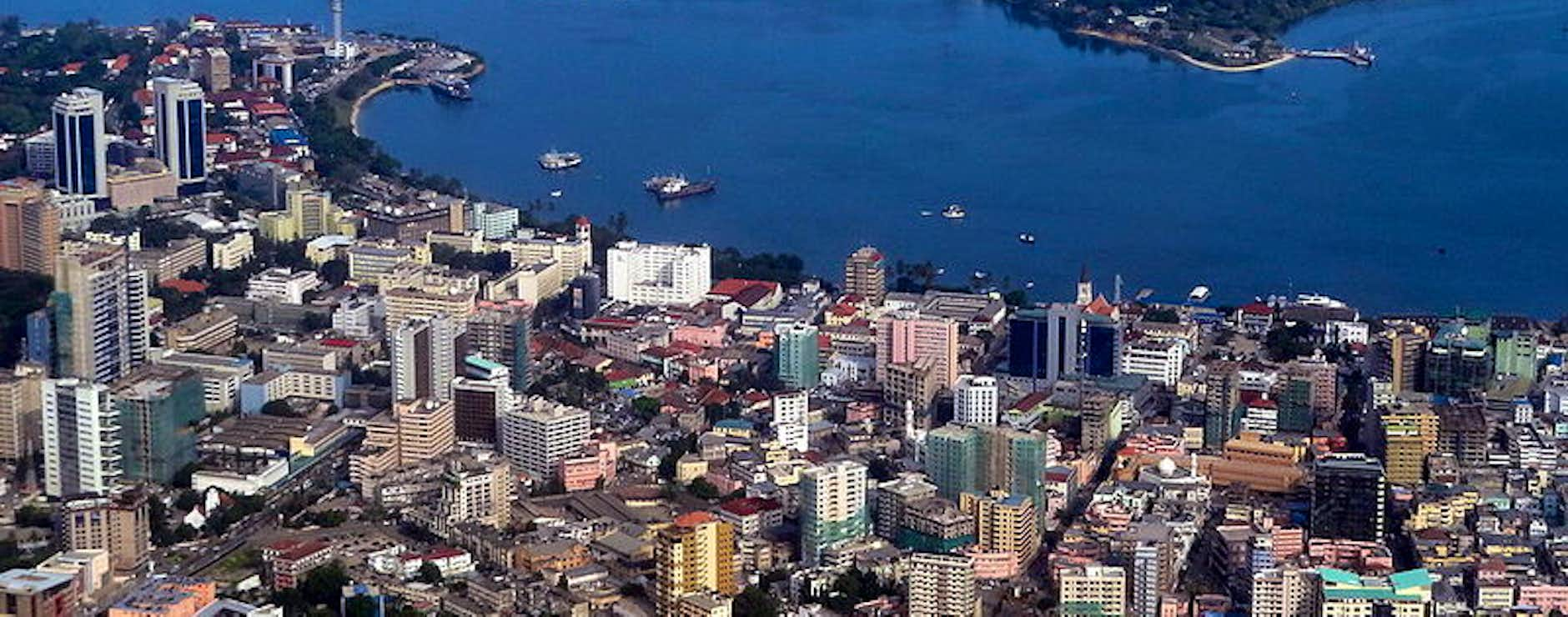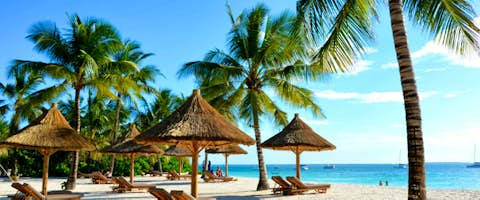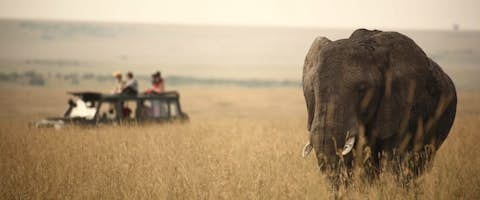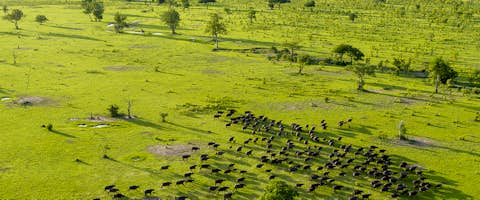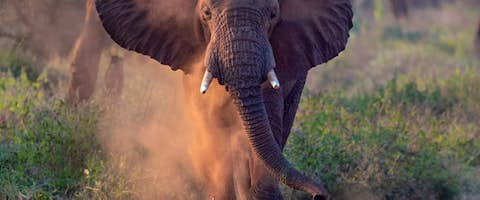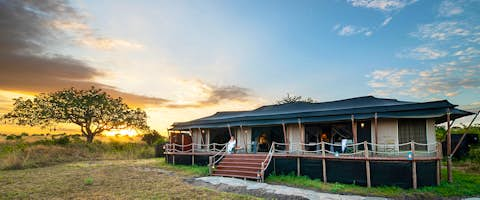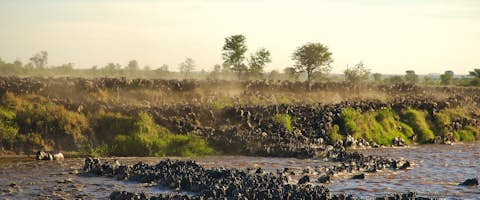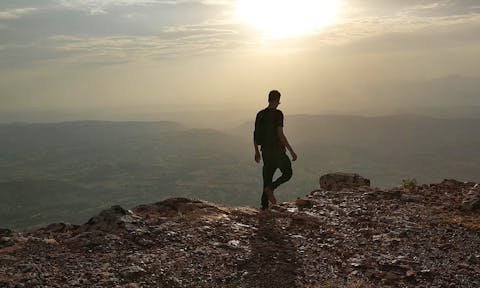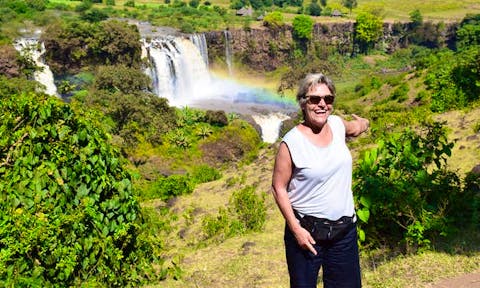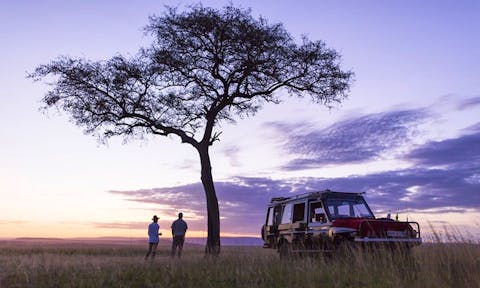Dar es Salaam at a glance
Dar es Salaam is a rapidly growing city home to just over 4 million residents. The name of the city, which loosely translates as ‘haven of peace’, is quite ironic given its chaotic, loud nature.
The city is hectic, and you could spend up to three hours in rush hour at night, but it is also a cultural hub. Those that enter the urban jungle will get a fascinating insight into local life and culture.
The city has exquisite restaurants, good nightlife, and several beautiful beaches. Its status as the economic hub of Tanzania makes it well-connected to surrounding cities, Zanzibar, and the national parks in the south.
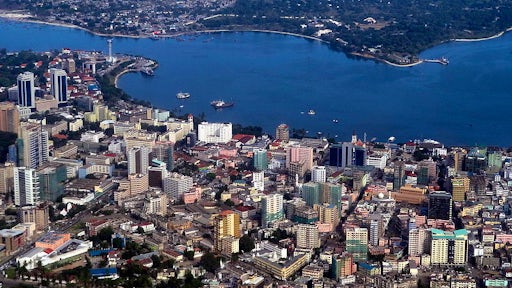
History of Dar es Salaam
-
Colonial history
Dar es Salaam started out as a small village on the coast, called Mzizima (Kiswahili for ‘healthy town’), but it was transformed into a plantation town by the Sultan of Zanzibar Majid bin Sayyid in the 1860s.
Zanzibar had been an important economic hub in the Indian Ocean and the re-named Dar es Salaam was created to support the archipelago’s growing needs. It grew further when Germany established a port there to support their colonisation of the inland, determining the city to be the capital of the colony of German East Africa.
Under British rule after the First World War, German East Africa became Tanganyika, but Dar es Salaam remained the capital due to its convenient coastal location. The British also amplified the segregation within the city, creating European, African, and later Asian quarters.
-
Post-independence
Nationalist forces blossomed in Dar es Salaam, leading to independence in 1961 under TANU- the Tanganyika African National Union.
Dar es Salaam became a hotspot for nationalist forces from other African countries, including FRELIMO soldiers from Mozambique, SWAPO guerrillas from Namibia, and ANC combatants from South Africa. The soldiers received training and education for the liberation of their countries.
Julius Nyerere, the first elected president of Tanganyika (and later Tanzania) and a reformer of African socialism, opposed cities. Nyerere favoured rural ideals and under his rule, the policy of ‘Ujamaa’ was developed.
-
The present
Despite Nyerere’s disdain for the city, Dar es Salaam continued to grow, but this growth was uneven and uncontrolled due to a lack of funding.
In 1974, Dar es Salaam lost its capital status to Dodoma in an attempt to decentralise the government and ease the strain on the big city.
Dar es Salaam’s past has created a diverse mix of African, Indian, Arab, German, and British architecture and influences, making it the cultural hotspot that it is today.
Getting to Dar es Salaam
As Tanzania’s economic capital, Dar es Salaam has good domestic and international transport links. Several airlines offer flights to the Julius Nyerere International Airport (DAR), including Etihad Airways, Emirates, Qatar Airways Delta, KLM, Swiss International Air Lines, and Turkish Airlines.
The bus journey from the airport to the city centre takes around 30 minutes. You can take any bus in the direction of Kisutu. Tickets should cost TSH 200-TSH 400. Alternatively, you can take a taxi or Uber to the city centre, but this will be more expensive. A taxi to the city centre costs around TSh 400.000.
After dark, caution should be taken with taxis. Dar es Salaam covers a huge spread of land and taxis can become much more expensive if you are staying in the outskirts of the city. If you book with us, we will take care of your transport.
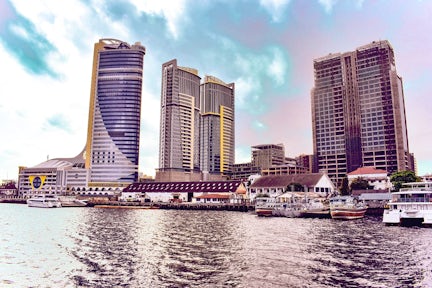
Getting around Dar es Salaam
-
Rush hour
-
By taxi
There aren’t any big companies that organise taxis in the city, but most of them are regulated by the government. Look for taxi signs and licenses for safer options.
Taxi fares are negotiated before alighting. In the evening, taxis are a bit harder to find. If you use a taxi driver and enjoy their service, you may want to ask for their number and call them directly for future trips.
Hotels, restaurants, and other entertainment venues will also have their preferred taxi drivers.
-
By bus
Dar es Salaam’s Bus Rapid Transit (BRT) system has transformed the city’s transport network.
The BRT system has reduced traffic congestion and dedicated bus lanes have reduced journey times.
The BRT costs less than TSH 2000. For tourists, BRT is a great option for getting around but routes are limited.
-
By dala dala
For those who are brave enough, the dala dala is a fun way to experience how locals travel around the city.
Dala dalas only leave when their capacity is reached, but they are very cheap (less than TSH 1000 for most routes). During rush hour, getting onto a dala dala can be a battle, with people climbing through windows. Travellers should avoid rush hour and wait for the next dala dala if the capacity has been reached.
Basic knowledge of Kiswahili is useful. These minibuses often have reckless drivers, so some travellers choose to avoid them.
-
By bajaji
Bajaji are the typical Indian three-wheeler which offers a cheap but less crowded alternative to dala dalas. Fares should be agreed on before entering the bajajis.
Bajajis are more prone to accidents due to their unstable nature and their drivers are often reckless. In traffic stops, they are much easier to rob, but this happens rarely at daytime.
Three people can easily fit into one of these vehicles, but it is common to see up to eight people trying to squeeze in.
-
By foot
At daytime walking around the city centre is safe.
Long walks are a refreshing way to take in the architecture and local culture but not all streets have pavements, so watch out for cars. Some locals will approach you to promote their shops, but you will not be harassed.
You should conceal your valuables as a precaution.
Things to do in Dar es Salaam
-
Discover the city’s history and culture
Mwenge Woodcarvers Market: This market is a great place to buy local souvenirs and watch local artists as they showcase their crafts. Artists are always happy to show off their talent and discuss their artwork with travellers. Make sure that you don’t fall for the first shop you see, venture into the depths of the market and haggle.
National Museum and House of Culture: This museum is great for learning more about the local and national history and seeing some artefacts. Visitors will be able to view some of Tanzania's earliest fossils as well as reports on the colonial and slavery period. You can also view President Nyerere’s Rolls Royce. Despite a lot of work in the past few years, the museum can seem a bit incoherent at times. Tickets cost around TSH 6500, while students only pay TSH 2600.
St. Joseph Cathedral: Home to the Archbishop of Dar es Salaam, this cathedral was built at the end of the 19th century by German missionaries. The gothic architecture, stained glass windows, and German inscriptions continue to enthral visitors.
Askari Monument: This monument was unveiled in 1927 to honour the askari (soldiers) who fought in for the British in WW1. It is located in Kisutu, the City Centre.
Village Museum: This museum is an interactive, open-air exhibition where you can enter various Tanzanian huts to see how rural people live in the countryside. There are also dances and music performances, which come at an extra price. Prices are TSH 6500 for adults, TSH 2600 for students and an additional TSH 2000 for performances.
Tinga Tinga Arts Cooperative Society: Tinga Tinga is the local style of art, and it depicts nature. It originated in Dar es Salaam and has since spread to other East African countries as a prime touristic art style. The Tinga Tinga Arts Cooperative Society is a group that continues this style, and they allow travellers to visit their workroom, order commissions and, buy artworks. The Society is conveniently located on the Msasani Peninsula where most travellers stay for great access to Coco Beach.
Cultural Tours with Afriroots: Afriroots provides walking, cycling and night tours to educate travellers about the city’s roots, social issues, and culture. Prices vary from US$40-50. Bookings can be organised at www.afriroots.co.tz/.
-
Beach getaways
Coco Beach in Oyster Bay is Dar es Salaam’s most famous beach. The white sand beach attracts locals and travellers alike. Due to its popularity, the beach can get quite crowded, but there are many bars and restaurants to enjoy a drink or a bite to eat in the evening. At night, there is often live music. Avoid taking valuables. Mbezi Beach and Kigamboni Beach are quieter alternatives.
There are also two islands just off the coast of Dar, offering serene white beach stretches, swaying cocoa palms and an island feel. Just 20 minutes away by boat, Mbudya Island is perfect for snorkelling, swimming, and tanning.
Boats can be taken from any major hotels on the beach. Travellers will need to pay a slightly inflated fee for entering the island (TSH 22,500 at the time of writing). Cabanas can be rented on the island and there are several food stalls.
Bongoyo Island is slightly larger than Mbudya Island and it is located about 30 mins away from the harbour by ferry. Ferries can be taken from the Slipway Shopping Centre on the Msasani Peninsula.
Ferries depart every 2 hours from 09:30-17:00 and the journey costs TSH 35.000 per person (at the time of writing).
The beautiful coastline can also be enjoyed from a traditional dhow, a popular boat in the Arabic part of the Indian Ocean. There are day trips that combine coast views with snorkelling and lunch on one of the many deserted islands off the city’s coastline.
You can also take a sunset boat trip or go fishing. At the time of writing, boat cruises cost around US$35 per person and kayaking costs US15$ per person.
-
Indulge in the local food
Dar es Salaam’s eclectic food scene is a fusion of African, Asian, Arabic, and European influences.
You can try a range of delicious dishes, from traditional Tanzanian and Indian snacks from street vendors to high-end Asian restaurants to barbecued fish at the beach. At Kivukoni Fish Market, you can watch as the local fishermen bring in their catch. Fishing is the primary source of income for many of the locals.
Msasani has some higher end restaurants that serve European cuisine, as well as beach bars, and seafood restaurants. There are several great restaurants next to the Slipway Shopping Centre which all offer stunning views of the beach.
We recommend Thai Kani, which fuses Tanzanian and Thai cuisine. The Yacht Club is also a great choice. Many restaurants also turn into clubs and bars at nights.
-
Dance the night away in Msasani's bars and clubs
Tanzanians know how to party. Tanzanian nightlife is shaped by some of the best music on the continent and cheap drinks, and nights out in Dar es Salaam are unforgettable.
Tanzanian bars and clubs are generally safe, but you should take precautions.
Some restaurants have live music performances, including the Maisha Club on Coco Beach, or Q Bar which is just 10 minutes from the beach.
Level 8, the bar of the Hyatt Regency, is a more upmarket option, and it offers sweeping views across the city and refreshing drinks.
-
Dar es Salaam as a stepping stone
Dar es Salaam is a great starting point for a weekend trip to Zanzibar or Mikumi National Park. Trips to both locations can be arranged through a tour operator or your hotel.
Venture to Zanzibar for its pristine beaches, a spice tour, and excellent waters for snorkelling. Zanzibar offers several outdoor activities and water sports, including cycling, kitesurfing, diving, or even island hopping.
Mikumi National Park is 4 hours away from the big city, making it perfect for a weekend trip. The park’s sweeping plains contain a plethora of wildlife that will excite animal enthusiasts and bird watchers alike.
Where to stay in Dar es Salaam?
Whether the city is just a stepping-stone for other adventures or a highlight of your itinerary, you will need to find comfortable accommodation.
You can choose between a range of hotels, Airbnbs, and hostels. Hostels are a great way for young people to meet fellow travellers and they are often reasonably priced.
Some of the best hotels at mid-market prices are The Oyster Bay, The Hyatt Regency (The Kilimanjaro), and The Southern Sun. If you want to stay in a hostel, Happy Feet Backpackers is a great option.
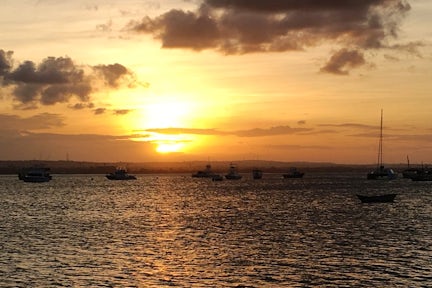
Final FAQs
-
Is Dar es Salaam safe to visit?
Yes, Dar es Salaam is safe to visit if you stick to some rules. Don’t wear any flashy jewelry or carry your valuables openly. Watch out for the insane traffic. Try to only use taxi drivers at night that your hotel or restaurant recommended or one that you already know. If you are going out late, it might be worth to pre-arrange a pick-up time with a known taxi. Don’t walk around, even just between bars, after nightfall. If you are in a bar or club, keep your drinks covered or not out of sight. If you are going out, it might be wise to dress a bit more covered than you would usually do to avoid unnecessary attention. These are all rules that should apply to your general travels in Tanzania, not just Dar es Salaam. Crime is an issue in the city, but this should not deter you from visiting Dar es Salaam.
-
Is Dar es Salaam expensive to visit?
No, Dar es Salaam is fairly cheap to visit and stay in. There are various hotels and restaurants, tailored to different budgets, so there should be no problem to find something that suits your wallet best.
-
Is Dar es Salaam worth visiting?
Dar es Salaam is usually skipped in favor of Zanzibar and the Northern National Parks. If the beautiful savannah or lonely beaches is what you are looking for, other places might be better, but Dar es Salaam is rich with culture and history. It is unbeatable for food options in the entire country and the nightlife is good. There is the possibility of accessing some beaches, but most importantly you will learn immensely about African urban life.
-
How hot is Dar es Salaam?
Dar es Salaam has a reputation for being very hot. Temperatures can reach well over 30 Degrees Celsius, worsened by the bustling city center and congestion. It is hot and humid all year round. Despite the heat you should wear covering clothes unless you are at the beach to respect the local culture.
-
Is the drinking water safe in Dar es Salaam?
Like in most of Tanzania, you should not drink the tap water in Dar es Salaam. It is fine to use it for brushing your teeth, but otherwise bottled water is better.
-
What language do they speak in Dar es Salaam?
Kiswahili and English are widely spoken in the city. Learning a few words of Kiswahili will help you haggling, negotiating fares and putting a smile on most locals’ faces. It’s also a very easy language to learn!
Popular Trips to Tanzania
The tours below showcase just some of what is possible. Use these itineraries as starting points, or to draw inspiration. Then get in touch, and let our expert team help craft the perfect itinerary for you.
Ready to plan your African adventure?
Listen
We'll spend some time listening to your aspirations, then discuss the kind of experience that might suit you.
Match
Next we'll discuss the options, shortlist the best trips for you and present you our impartial recommendations.
Reserve
We'll place a 24 hour hold on your preferred option - without obligation - whilst we talk through the details.
Whatever your budget, group size, length of stay, preferred activity or appetite for adventure, we can help.

